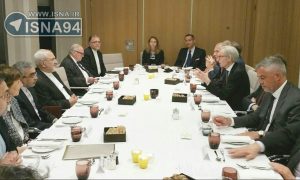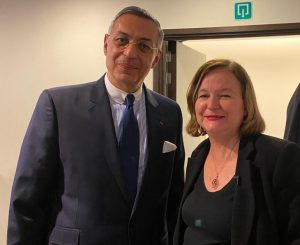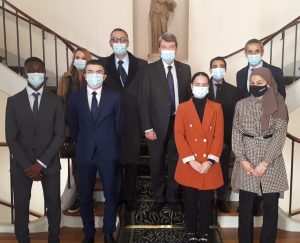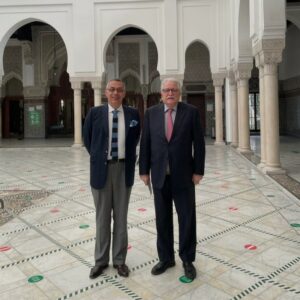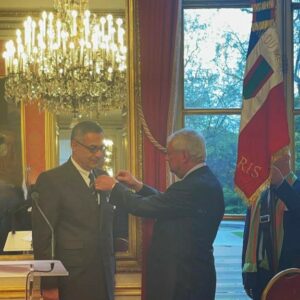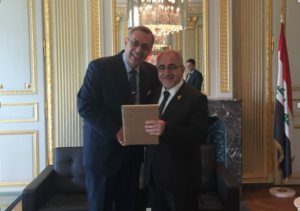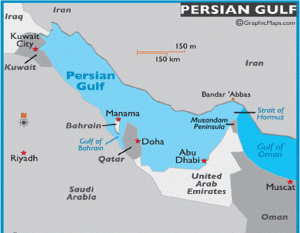
I recently wrote about the plight of the Shia in Bahrain in the context of that country’s parliamentary elections that took place last November. I argued that the Bahraini government was oppressing its Shia-majority population with the backing of Saudi Arabia, fueling grievances and dissent against it, and therefore actually widening the gap between the Shia majority and the government – to Iran’s benefit. Across the 25km causeway that connects the two countries, Saudi Arabia is dealing with dissent from its own Shia population at home and taking similarly oppressive measures, leading to similar grievances and dissent which resulted in yet more clashes earlier this month. With these growing tensions, the future of the Arab Sheikdoms of the Persian Gulf is becoming increasingly uncertain.
The aforementioned incident took place in the Qatif area of Saudi Arabia’s Eastern Province on January 7, in what Saudi officials called a “preemptive security operation against terrorists”. Six militants were killed, and a stash of light weaponry was confiscated. Qatif is one of the areas where Saudi Arabia’s Shia, who make up about 10-15% of the entire population, is heavily concentrated. It also happens to be where most of Saudi Arabia’s oil and gas fields are located, adding another dimension to the sectarian dynamics.
The overwhelmingly Shia-majority Qatif area has been a thorn in the Saudi government’s side long before the most violent confrontations of the last few years. Starting with protests in 1979 that corresponded with the Iranian revolution, the whole Qatif area has periodically had unrest and the Saudi government’s heavy-handed oppression is well-known. When Muhammad bin Salman (MbS) became crown prince in early 2017, his series of reforms to improve the kingdom’s image did not prevent some of the most violent security operations the area has seen, which nearly completely destroyed the town of Awamiya, well into 2017. However, as part of MbS’s charm offensive, the Saudi government did also invest more than $60 million to rebuild (and another $230 million to compensate residents) in this area that had only about 30,000 residents to begin with. But there is a reason for the emphasis on Awamiya and its transformation into a “model neighborhood”: Awamiya has the added symbolic significance of being the hometown of Sheikh Nimr al-Nimr – a prominent Shia cleric who actively supported the Saudi episode of the Arab Spring protests in 2011 and was executed with 46 others on terrorism charges in January 2016. Today, the Saudi government is promoting the “facelift” of Awamiya, which included transforming its 400-year-old historic Musawara neighborhood, with the hopes that pumping money into infrastructure and developing public spaces can blunt the dissent and buy residents’ acquiescence.
In June of last year, Human Rights Watch released a damning briefing on the systematic discrimination and incitement against the Shia of Saudi Arabia in public education, the justice system, religious freedom, and employment. The report documents what was already known about the Shia in Saudi Arabia: they are not allowed public places of worship; the times they have been appointed to public-sector jobs in diplomacy, the military, justice system, or security forces can be counted on the fingers of one hand; they are commonly discriminated against by the justice system; and face widespread incitement. The reason is not just sectarian: Shia populations across the Middle East are commonly regarded as fifth columnists of Iran. But in continuing to alienate this population, just like in Bahrain, the Saudi government risks driving them into seeking the protection of Iran. MbS may be less worried than Bahrain’s al Khalifa government since his Shia population is only a minority, unlike in Bahrain, but with tensions running high in the region and particularly between Saudi Arabia and Iran, even a minority may be enough to create a problem to be reckoned with. And according to another Human Rights Watch report released only a few months ago, MbS’s baby steps vis-à-vis his Shia minority may not be enough to prevent this from happening.
There is an interesting map that was published by the Armed Forces Journal back in 2006, which the website re-upped in 2013, called “Blood Borders”. In this map, a retired American military officer by the name of Ralph Peters redraws the borders of the Middle East according to ethnic, sectarian, and tribal lines (not accounting for all of them but for the biggest ones) and suggests that doing so could ease the tensions in the region. According to this infamous map, some of the countries are untouched, but, for example Saudi Arabia is split into several countries, one of which is an Arab Shia state that shares the Qatif area of Saudi Arabia and all of Bahrain. Considering the last 50 years of tensions and all-out wars in the region, the extent to which internal strife weakens states, not to mention the grounds they provide for states to meddle in each other’s affairs, perhaps Peters is onto something.
By Ardavan Amir-Aslani



